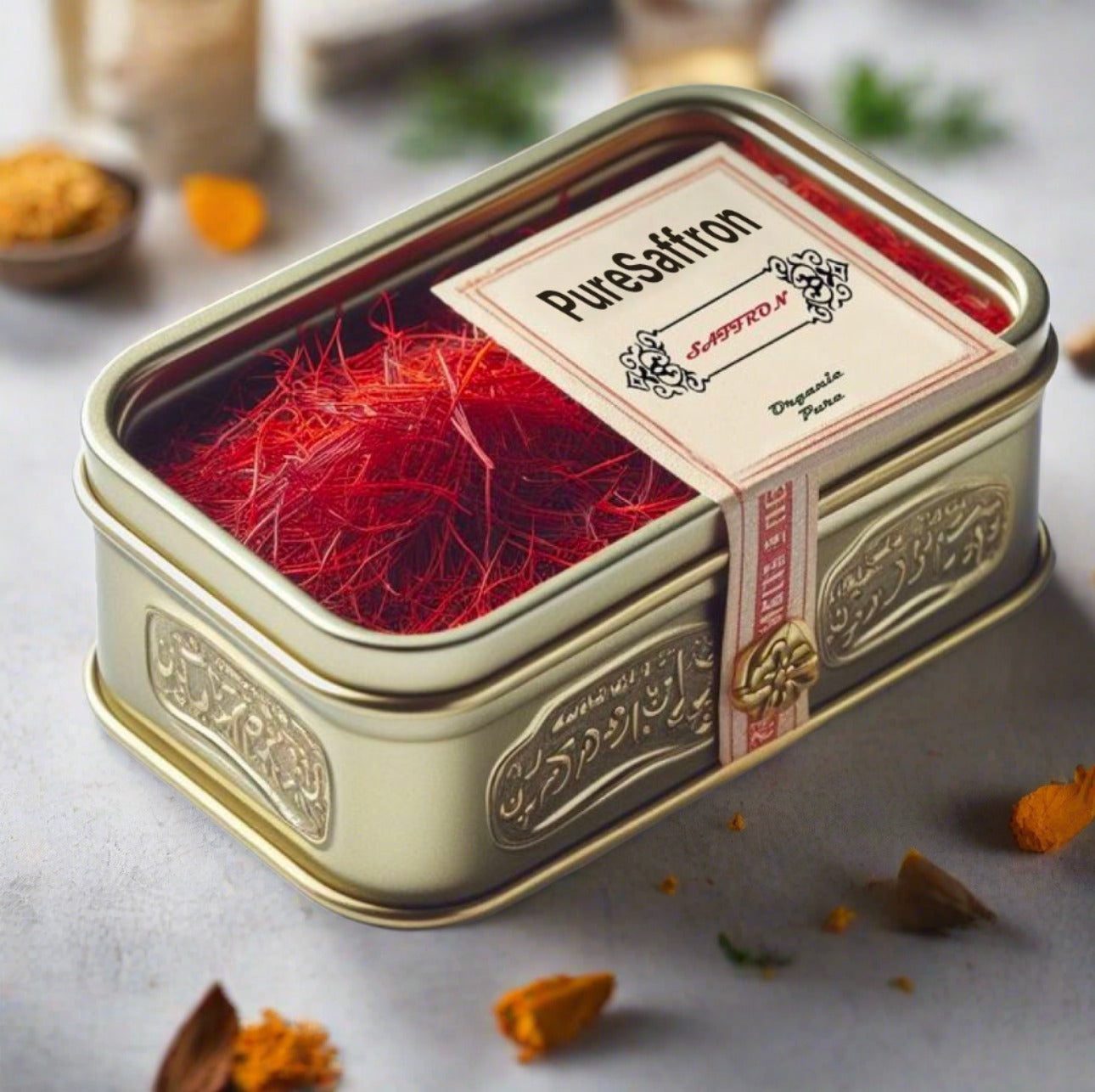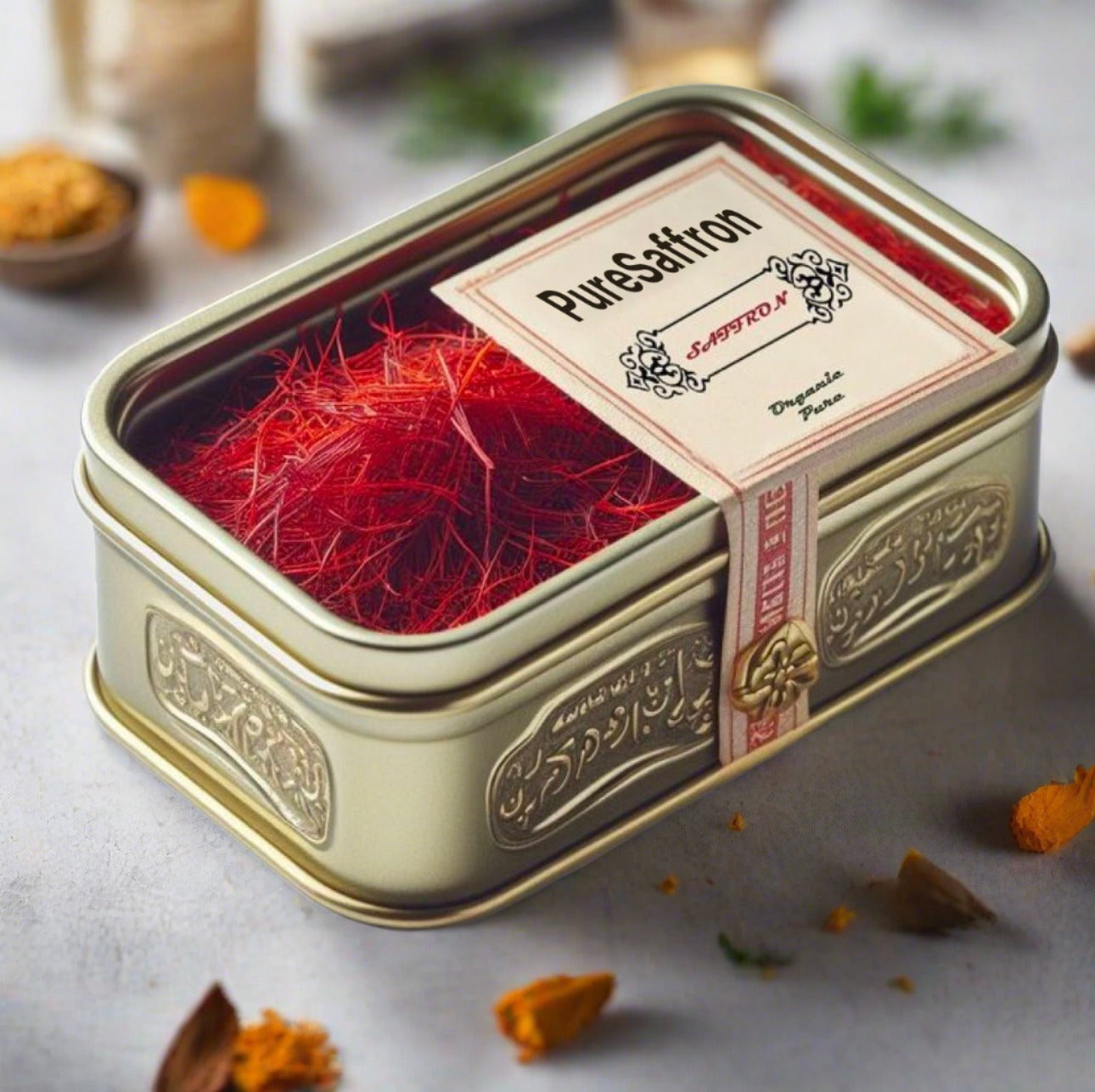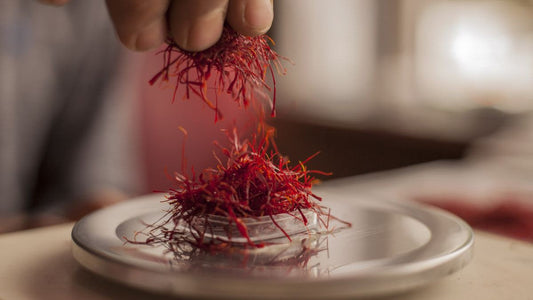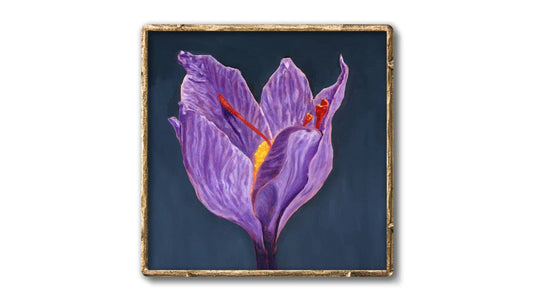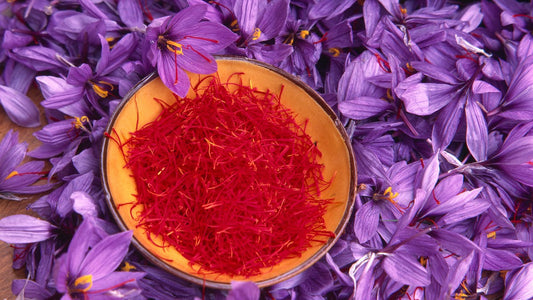
Saffron Spice Blends: A Culinary Journey with the World’s Most Precious Spice
Ara OhanianShare
Saffron, often hailed as the world's most expensive spice, is a treasure trove of flavor, aroma, and color. While its standalone charm is undeniable, saffron truly shines when paired with complementary spices in expertly crafted blends. These saffron spice blends not only elevate your culinary creations but also introduce a new dimension of sophistication to your dishes.
In this blog, we’ll dive deep into the world of saffron spice blends, exploring their origins, uses, and how you can incorporate them into your cooking. Whether you're a seasoned chef or a home cook looking to experiment, this guide will inspire you to harness the full potential of saffron in your kitchen.
What Are Saffron Spice Blends?
Saffron spice blends are carefully curated mixtures of saffron with other herbs and spices. These blends are designed to enhance the unique qualities of saffron—its earthy, floral aroma and golden-yellow hue—while introducing complementary flavors that create a harmonious balance.
Common spices and ingredients paired with saffron include:
- Cumin
- Cardamom
- Turmeric
- Cinnamon
- Ginger
- Rose petals
- Black pepper
- Nutmeg
These blends are versatile and can be used in a wide range of dishes, from savory stews to delicate desserts. Their applications are as diverse as their flavor profiles, making saffron spice blends a staple in many global cuisines.
The Origins of Saffron Spice Blends
Saffron has a rich history that spans several millennia and cultures. Originating from the Mediterranean and the Middle East, saffron quickly became a coveted ingredient in ancient Persia, India, and Europe. The tradition of blending saffron with other spices likely began in regions where spices were abundant, such as Persia and India.
In Persian cuisine, for example, saffron is often paired with cardamom and rose to create aromatic rice dishes and desserts. In Indian cuisine, saffron is a key ingredient in spice blends like garam masala and biryani masala, lending its golden color and depth of flavor to celebratory dishes.
Over time, these regional traditions evolved, and saffron spice blends became a cornerstone of global culinary artistry.
Popular Saffron Spice Blends Around the World
Different cultures have their own unique saffron spice blends, each with distinctive characteristics. Here are some of the most popular examples:
- Ras el Hanout (North Africa): A complex blend of saffron, cinnamon, cumin, coriander, and other spices, commonly used in Moroccan tagines.
- Paella Spice Mix (Spain): A blend of saffron, smoked paprika, and garlic, essential for the iconic Spanish paella.
- Persian Advieh: A fragrant mix of saffron, cinnamon, turmeric, rose petals, and cardamom, used in stews and rice dishes.
- Biryani Masala (India): A flavorful combination of saffron, cloves, nutmeg, and bay leaves, perfect for biryani and other rice-based dishes.
- Middle Eastern Baharat: A versatile spice mix with saffron, black pepper, and allspice, used for seasoning meats and soups.
How to Use Saffron Spice Blends in Cooking
Incorporating saffron spice blends into your cooking is easier than you might think. Here are some tips to help you get started:
1. Infuse the Blend
Saffron releases its flavor and color when steeped in warm water or broth. Before adding the blend to your dish, consider infusing it in liquid for 10-15 minutes to maximize its impact.
2. Pair with the Right Ingredients
Saffron spice blends work particularly well with ingredients like rice, chicken, lamb, and seafood. They also complement vegetables like eggplant, zucchini, and potatoes.
3. Use Sparingly
Saffron is potent, and a little goes a long way. Start with a small amount of the blend and adjust to taste as needed.
4. Experiment with Desserts
Saffron isn't limited to savory dishes. Use saffron spice blends in desserts like custards, ice creams, and cakes for a luxurious twist.
How to Create Your Own Saffron Spice Blends
Want to try your hand at crafting your own saffron spice blends? Follow these simple steps:
1. Gather Your Ingredients
Choose high-quality saffron and complementary spices based on your desired flavor profile. Some good starting points include cinnamon, cardamom, and turmeric.
2. Toast the Spices
Lightly toast the spices (excluding saffron) in a dry pan to enhance their flavors.
3. Grind and Mix
Grind the toasted spices into a fine powder and mix them with saffron threads or powdered saffron.
4. Store Properly
Store your blend in an airtight container in a cool, dark place to preserve its freshness.
Where to Buy Premium Saffron for Your Spice Blends
When creating or using saffron spice blends, the quality of the saffron makes all the difference. For the best results, always choose pure, high-grade saffron like the one available at PureSaffron’s Persian Pure Saffron. Its vibrant color, intense aroma, and authentic flavor ensure your blends will be nothing short of exceptional.
FAQs About Saffron Spice Blends
1. What are saffron spice blends used for?
Saffron spice blends are used to enhance the flavor, aroma, and color of a wide range of dishes, including rice, stews, meats, seafood, and desserts.
2. Can I make my own saffron spice blends at home?
Yes, you can create your own blends by combining saffron with complementary spices such as cinnamon, cardamom, and turmeric. Toast and grind the spices for the best results.
3. How should I store saffron spice blends?
Store saffron spice blends in an airtight container in a cool, dark place to preserve their freshness and potency.
4. Are saffron spice blends only for savory dishes?
No, saffron spice blends can be used in both savory and sweet dishes, including desserts like custards and cakes.
5. Why is saffron so expensive?
Saffron is expensive due to its labor-intensive harvesting process and the fact that each flower yields only a small amount of saffron threads. This makes it a highly valuable and sought-after spice.
